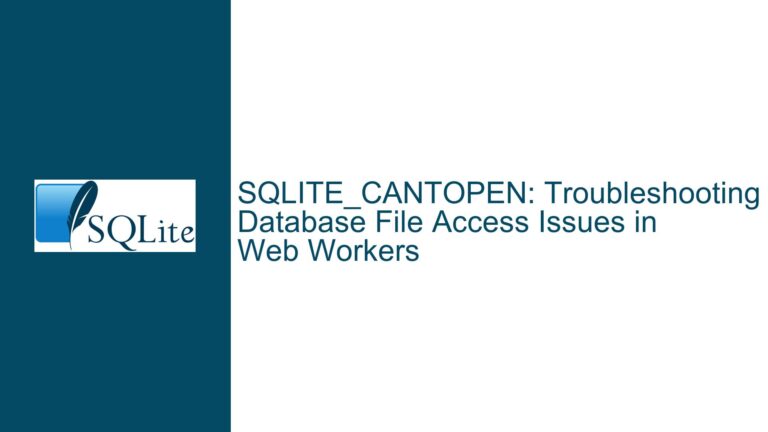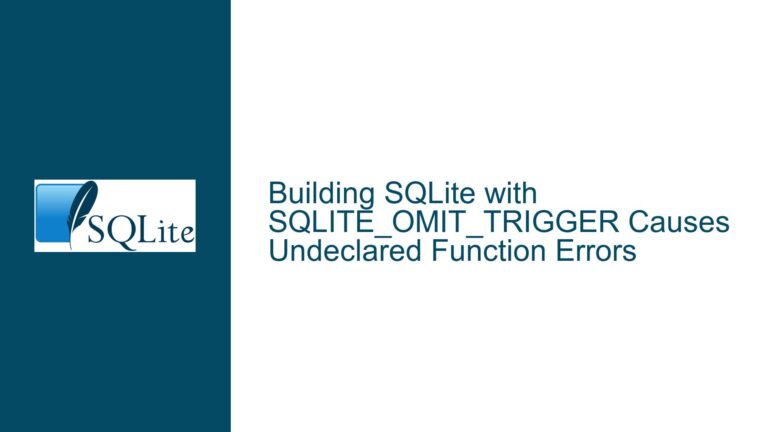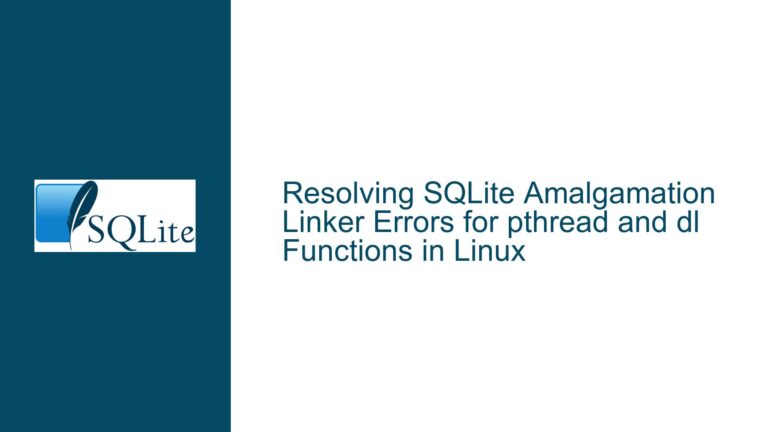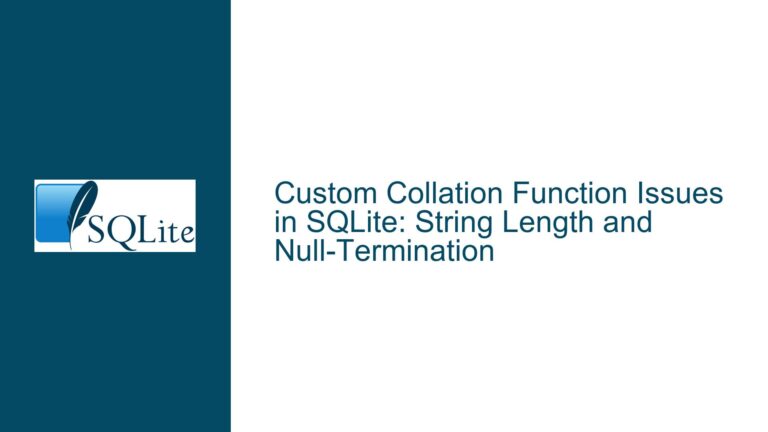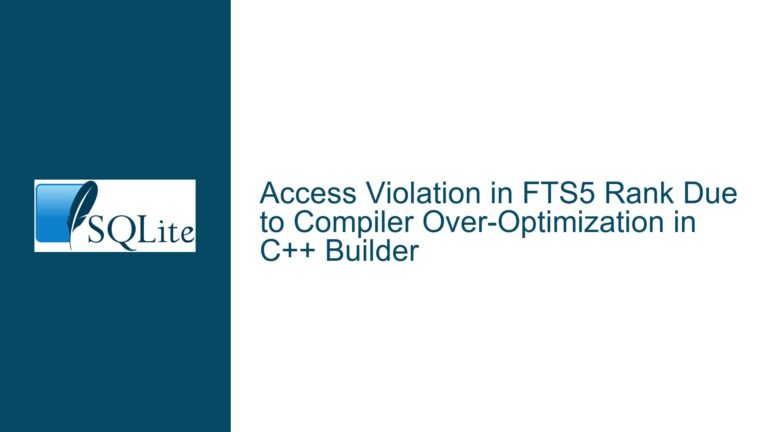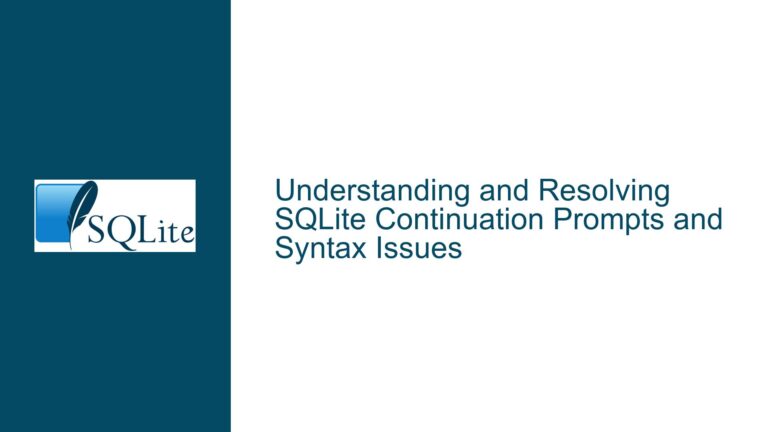LumoSQL 0.3: Exploring SQLite Backends, Benchmarking, and Storage API Development
SQLite Backend Exploration and Benchmarking with LumoSQL 0.3
LumoSQL 0.3 represents a significant step forward in the exploration of SQLite’s potential when paired with different backend storage systems. The project aims to answer several critical questions about SQLite’s performance, scalability, and adaptability when integrated with modern key-value stores like LMDB (Lightning Memory-Mapped Database) and the classic Berkeley Database (BDB). The primary focus is on understanding how SQLite can be enhanced by leveraging different storage backends, benchmarking these configurations, and ultimately developing a stable backend storage API for SQLite.
The LumoSQL project is not a fork of SQLite but rather a modification that allows SQLite to operate with multiple backends. This approach enables developers to test and compare the performance of SQLite with different storage engines without diverging from the main SQLite codebase. The project also introduces a novel tool called "not-forking," which facilitates the synchronization of multiple upstream sources, making it easier to maintain compatibility with the latest SQLite versions while experimenting with different backends.
One of the key achievements of LumoSQL 0.3 is the successful integration of LMDB as a backend for SQLite. LMDB is known for its high performance and efficiency, particularly in scenarios involving large datasets. The initial benchmarking results indicate that SQLite with LMDB outperforms the standard SQLite implementation as dataset sizes increase. However, the project has also uncovered some challenges, particularly with SQLite’s concurrency model, which is not as robust as LMDB’s. This discrepancy suggests that further optimization is needed to fully leverage LMDB’s capabilities within SQLite.
Another important aspect of LumoSQL 0.3 is its benchmarking framework. The framework allows developers to run a series of tests on different SQLite configurations, including those with LMDB and BDB backends. The results are stored in a centralized SQLite database, enabling easy comparison and analysis. This benchmarking capability is crucial for understanding the performance characteristics of different storage backends and for identifying areas where SQLite can be improved.
The ultimate goal of LumoSQL is to develop a stable backend storage API for SQLite. This API would abstract the complexities of different key-value stores, allowing SQLite to seamlessly switch between them based on the specific requirements of a given application. Achieving this goal requires a deep understanding of the interactions between SQLite’s virtual database engine (VDBE), btree, and pager components, as well as the unique characteristics of each backend storage system.
Challenges in Integrating LMDB and BDB with SQLite
Integrating LMDB and BDB with SQLite presents several challenges, primarily due to differences in how these key-value stores handle multi-version concurrency control (MVCC), key sizes, and locking mechanisms. LMDB, for instance, uses a memory-mapped file approach, which allows for extremely fast read operations but requires careful management of write operations to avoid corruption. BDB, on the other hand, has a more traditional approach to database management, with its own set of optimizations and limitations.
One of the key challenges in integrating LMDB with SQLite is ensuring that the two systems’ concurrency models are compatible. SQLite’s concurrency model is relatively simple, with a single writer and multiple readers allowed at any given time. LMDB, however, supports multiple writers and readers simultaneously, thanks to its MVCC implementation. This difference can lead to performance bottlenecks when SQLite is used with LMDB, particularly in high-concurrency scenarios.
Another challenge is the handling of key sizes. SQLite’s btree implementation has specific requirements for key sizes, which may not align with those of LMDB or BDB. This misalignment can lead to inefficiencies or even errors when data is transferred between SQLite and the backend storage system. The LumoSQL project is actively working on addressing these issues by developing a more flexible key management system that can accommodate the requirements of different backends.
Locking mechanisms also present a significant challenge. SQLite uses a file-based locking system to manage access to the database, while LMDB and BDB have their own locking mechanisms. These differences can lead to conflicts when SQLite attempts to access data stored in LMDB or BDB, particularly in multi-threaded applications. The LumoSQL project is exploring ways to abstract these locking mechanisms, allowing SQLite to work seamlessly with different backends without requiring significant changes to the core SQLite code.
Finally, the LumoSQL project must contend with the legal and licensing implications of integrating different backends with SQLite. LMDB, for example, is licensed under the OpenLDAP Public License, which is compatible with SQLite’s public domain license. However, BDB is licensed under the Sleepycat License, which has more restrictive terms. The LumoSQL team must carefully navigate these licensing issues to ensure that the project remains open and accessible to all developers.
Developing a Stable Backend Storage API for SQLite
The development of a stable backend storage API for SQLite is the ultimate goal of the LumoSQL project. This API would allow SQLite to operate with different key-value stores, such as LMDB and BDB, without requiring significant changes to the core SQLite code. Achieving this goal requires a deep understanding of the interactions between SQLite’s virtual database engine (VDBE), btree, and pager components, as well as the unique characteristics of each backend storage system.
One of the key requirements for the backend storage API is that it must be minimally invasive. This means that the API should not require significant changes to the existing SQLite codebase, particularly in areas that are critical to SQLite’s performance and reliability. The LumoSQL project has made significant progress in this area by developing the "not-forking" tool, which allows developers to experiment with different backends without diverging from the main SQLite codebase.
Another important requirement for the backend storage API is that it must be flexible enough to accommodate the unique characteristics of different key-value stores. For example, LMDB’s memory-mapped file approach requires a different set of optimizations compared to BDB’s more traditional approach. The API must be able to abstract these differences, allowing SQLite to work seamlessly with different backends without requiring significant changes to the application code.
The LumoSQL project is also working on improving the benchmarking framework to provide more detailed insights into the performance characteristics of different backends. This framework will allow developers to run a series of tests on different SQLite configurations, including those with LMDB and BDB backends, and store the results in a centralized SQLite database. This data will be invaluable for identifying areas where SQLite can be improved and for making informed decisions about which backend to use in a given application.
Finally, the LumoSQL project is actively engaging with the broader SQLite community to gather feedback and contributions. The project’s use of Fossil for version control and collaboration is a testament to its commitment to open-source development. By working closely with the community, the LumoSQL team hopes to develop a backend storage API that meets the needs of a wide range of applications and use cases.
In conclusion, LumoSQL 0.3 represents a significant step forward in the exploration of SQLite’s potential when paired with different backend storage systems. The project’s focus on benchmarking, backend integration, and API development is paving the way for a more flexible and high-performance version of SQLite that can meet the needs of modern applications. As the project continues to evolve, it will be exciting to see how these advancements are adopted by the broader SQLite community and how they contribute to the ongoing development of this widely-used database engine.

